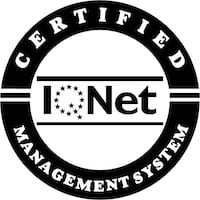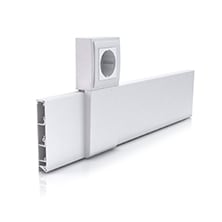
Technical specification
Skirting board ducts 80 in  colour white
colour white
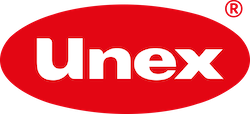
Description
Use
- For distribution of power and data services and mounting of outlets through skirting boards in housing and buildings.
- Flexible and surface mounted,installations adaptable to future changes of the workstations. Socket boxes can be enlarged according to the requirements.
- Four compartments for all services.The Skirting board duct 80 allows you a simultaneous lay out of all necessary wiring. Offers the possibility to mountthe most common switches and sockets assuring a solid fixing.
Design
- Compact and plain trunking, with adjusted sizes, to perfectly merge into the surroundings.
- Smoothed design that confer the appearance of a standard skirting board.
- Optimises the space dedicated to conventional decorative skirting boards.
- Colours: Aluminium RAL 9006 and White RAL 9010 able to be painted like the wall or the floor.
- Colour homogeneity between trunkings, fittings and switches and sockets adapters.
Installation
- Simplifies the installation's execution, does not cause any constructive waste (cutting slits, noise, dust,dirt) during installation, there are no interferences between implicated associations. Direct mounting on the floor:Thanks to a special design of the base,the covers and the fittings.
- 2m lengths and base perforation every 250mm for a faster assembly.
- Fittings in two pieces which assure a good retention of the cover in any mounting position, holds the cables and the external one covers the cut marks of the base and cover.
- One cable retainer every 0,5m is included in order to retain the cables and to allow independent access to each circuit.
- Protective film. Ensures that the product remains in perfect conditions during transport and application.
Mounting instructions
- To fulfil the characteristics defined herein, the installation must be carried out in accordance with the manufacturer`s assembly instructions provided in the main product packaging and are also available on the website www.unex.net.
Quality Marks(1)
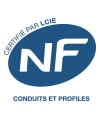
EN 50085-2-1:2006 + A1:2011
Licence nº: NF004_1176
Approvals(1)
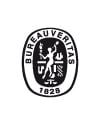
Rules for the Classification of Steel Ships
Type Approval Certificate nº 05116/I1 BV
Characteristics of Trunking system
|
Raw material
|
|
|---|---|
|
Skirting board duct
|
U23X (See technical data for raw material).
|
|
Fittings and accessories
|
U24X (See technical data for raw material).
|
|
Applications
|
|
|---|---|
|
Applications
|
Indoor installations.
|
|
Silicone contents
|
|
|---|---|
|
Silicone free
|
<0,01%
|
|
Directive 2011/65/EU
|
|
|---|---|
|
RoHS II Compliant
|
Compliant.
|
|
EN 50085-2-1:2006 + A1:2011
|
|
|---|---|
|
Minimum storage and transport temperature
|
-45ºC
|
|
Minimum installation and application temperature
|
-5ºC
|
|
Maximum application temperature
|
+60ºC
|
|
Resistance against mechanical impacts during mounting and use
|
|
|
Resistance to flame propagation
|
Non-flame propagation.
|
|
Electrical continuity characteristic
|
Without electrical continuity characteristic.
|
|
Electrical insulating characteristic
|
With electrical insulating characteristic.
|
|
Protection degree assured by the enclosure
|
IP4X. Mounted on the wall.
|
|
Retention of the system access cover
|
Cover removable only with the aid of a tool.
|
|
Electrically protective separation
|
With and without internal protective separation.
|
|
Intended installation positions
|
|
|
Prevention of contact with liquids
|
Relying on manufacturer's instructions allowing all installation positions of the CTS and all positions of insulated conductors and live parts in CTS.
|
|
Type
|
Type 3.
|
|
Rated Voltage
|
750 V
|
|
Protection against mechanical damage
|
IK07
|
|
Fixing for apparatus mounting of socket outlets
|
Resistance to extraction of 81 N
|
|
EN 60695-2-11:2001
|
|
|---|---|
|
Glow-wire test
|
Severity degree: 960ºC
|
Characteristics of Trunking system
Raw material
Skirting board duct:
U23X (See technical data for raw material).
Fittings and accessories:
U24X (See technical data for raw material).
Applications
Applications:
Indoor installations.
Silicone contents
Silicone free:
<0,01%
Directive 2011/65/EU
RoHS II Compliant:
Compliant.
EN 50085-2-1:2006 + A1:2011
Minimum storage and transport temperature:
-45ºC
Minimum installation and application temperature:
-5ºC
Maximum application temperature:
+60ºC
Resistance against mechanical impacts during mounting and use:
- Trunkings: 2 J at -5ºC
- Fittings: 0,5 J at -5ºC
Resistance to flame propagation:
Non-flame propagation.
Electrical continuity characteristic:
Without electrical continuity characteristic.
Electrical insulating characteristic:
With electrical insulating characteristic.
Protection degree assured by the enclosure:
IP4X. Mounted on the wall.
Retention of the system access cover:
Cover removable only with the aid of a tool.
Electrically protective separation:
With and without internal protective separation.
Intended installation positions:
- Mounted on the wall and with floor support.
- Mounted on the ceiling and with an horizontal supporting surface not being the ceiling.
Prevention of contact with liquids:
Relying on manufacturer's instructions allowing all installation positions of the CTS and all positions of insulated conductors and live parts in CTS.
Type:
Type 3.
Rated Voltage:
750 V
Protection against mechanical damage:
IK07
Fixing for apparatus mounting of socket outlets:
Resistance to extraction of 81 N
EN 60695-2-11:2001
Glow-wire test:
Severity degree: 960ºC
Compulsory regulations
|
European Directive 2014/35/EU
|
|
|---|---|
|
CE Marking
|
Conformity with standard EN 50085-2-1:2006+A1:2011.
|
Compulsory regulations
European Directive 2014/35/EU
CE Marking:
Conformity with standard EN 50085-2-1:2006+A1:2011.
Characteristics of U23X raw material
- Base raw material: PVC.
- Silicone contents: <0,01%.
- Phthalate contents according to ASTM D2124-99:2004: <0,01%.
- Dielectric strength according to EN 60243-1:2013:
18±5 kV/mm.
Test sample thickness 2,5 mm. - Reaction to fire according to UNE 201010:2015: Classification: M1.
- UL flammability tests on plastic materials according to ANSI/UL 94: 1990: Degree UL94: V0.
- L.O.I. Oxygen index according to EN ISO 4589:1999 + A1:2006: (Concentration %) = 52±5.
- Coefficient of linear expansion: 0,07 mm/°C m. (2)
Characteristics of U24X raw material
- Base raw material: PVC.
- Silicone contents: <0,01%. (3)
- Phthalate contents according to ASTM D2124-99:2004: <0,01%. (3)
- Dielectric strength: Insulating.
- Reaction to fire s/UNE 201010:2015: Classification: M1
- UL flammability tests on plastic materials according to ANSI/UL 94: 1990: Degree UL94: V0.
- Coefficient of linear expansion: 0,07 mm/°C m. (2)
Notes
1. Except for new part numbers, which are under process of obtaining quality marks and approvals. See updated information of each part number on www.unex.net
2. All features marked are based on random tests of the material in the manufacture of our products. However, they only reflect the values accepted by the raw material manufacturers, which are provided only as information and guidance.
3. Detection limit for the analytical technique applied.
23/07/2025 16:27:52
